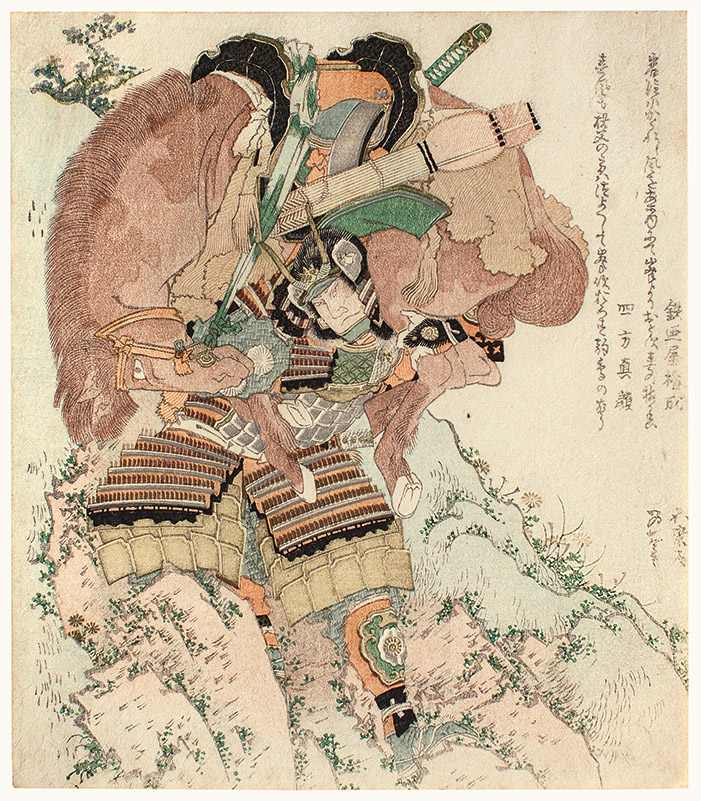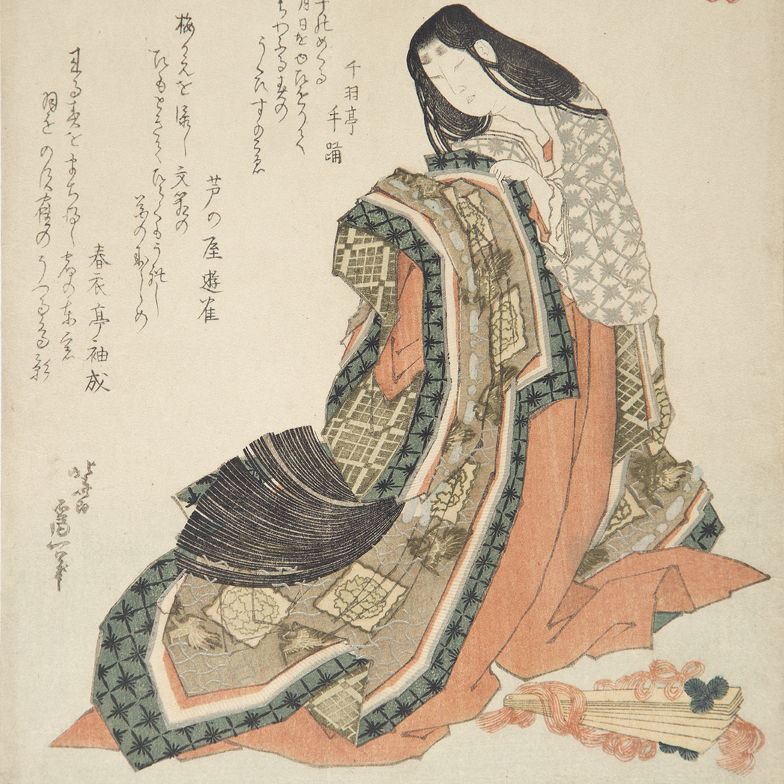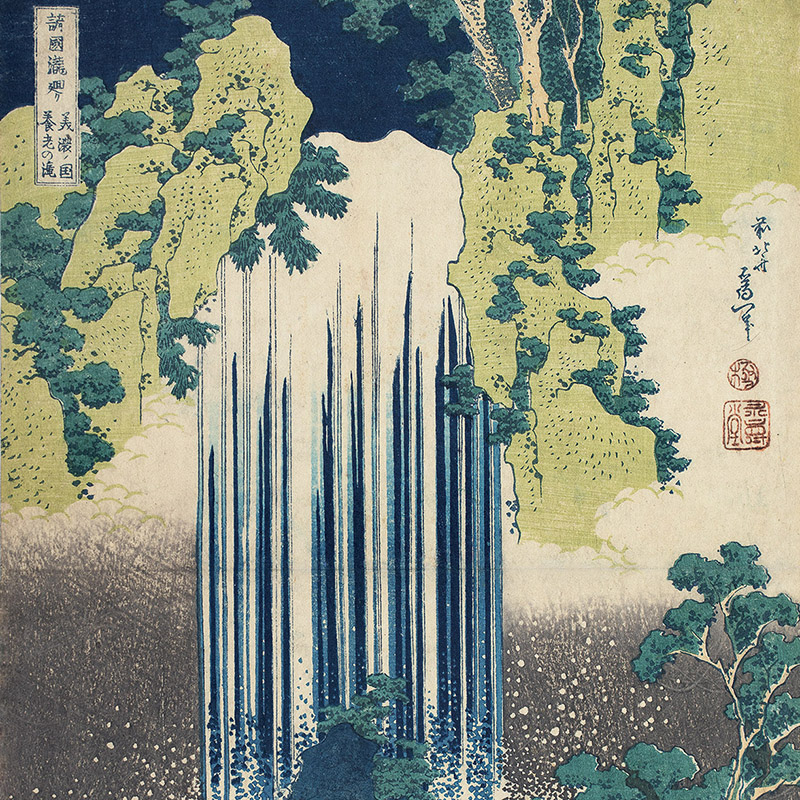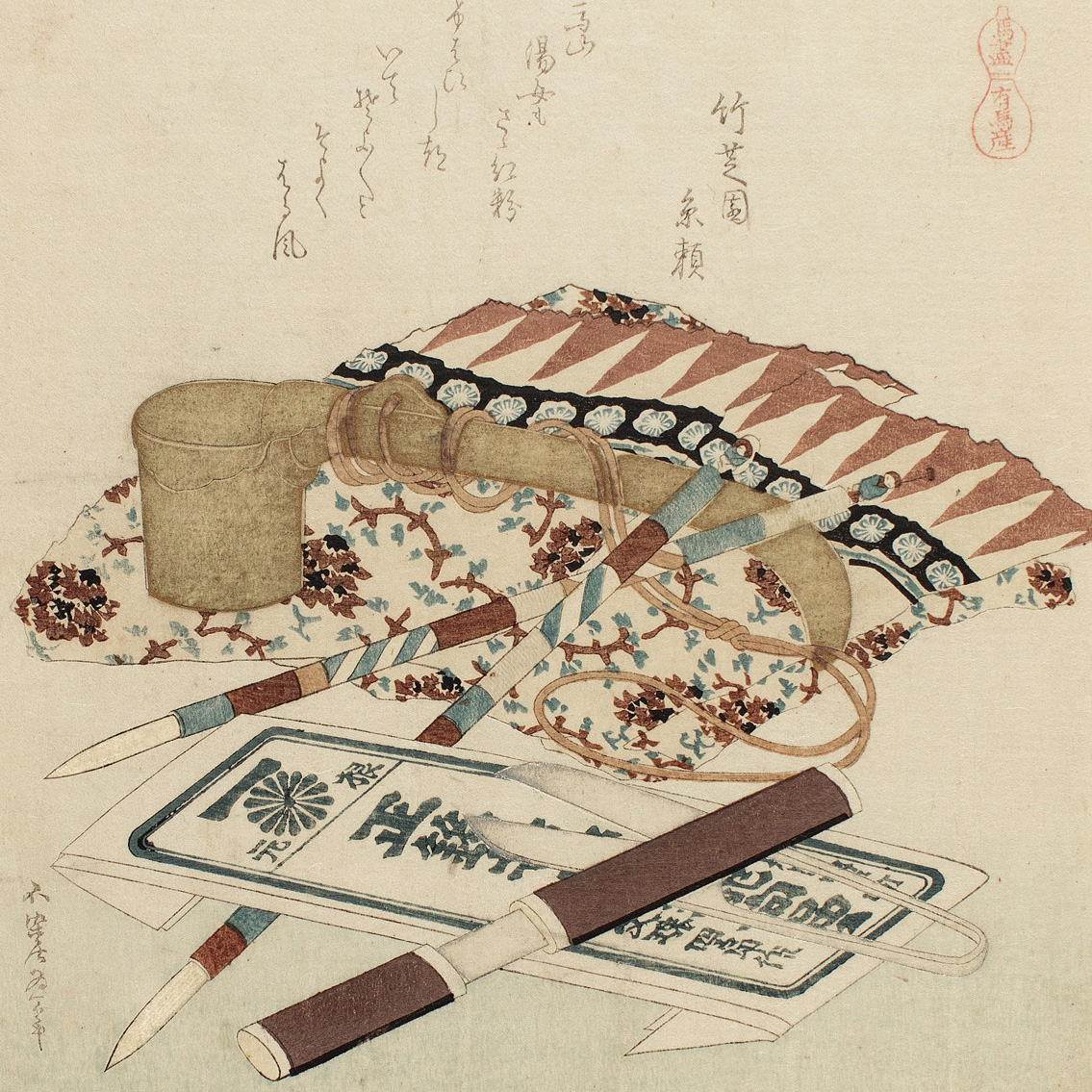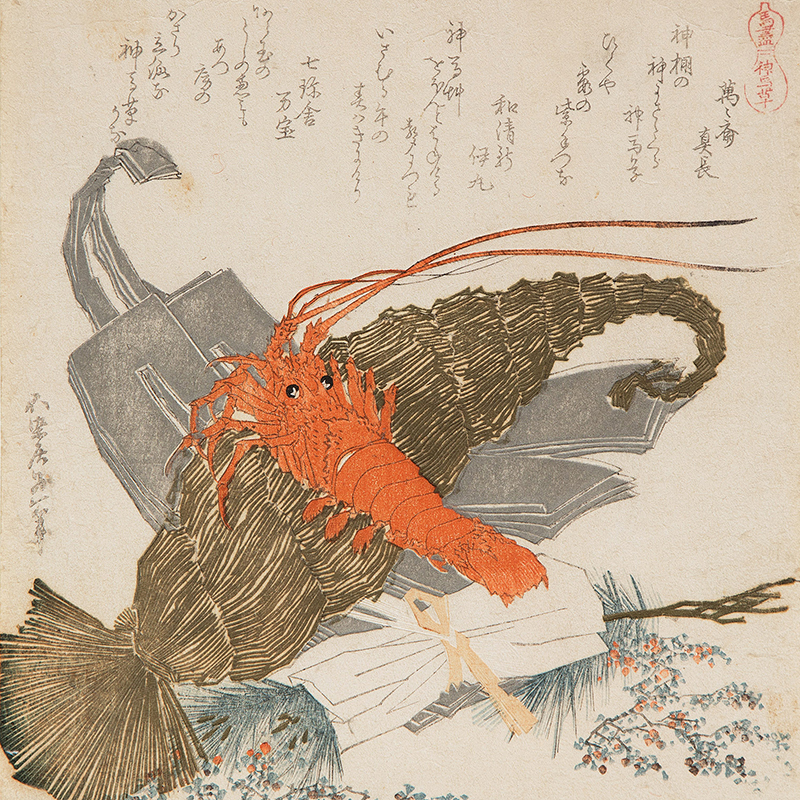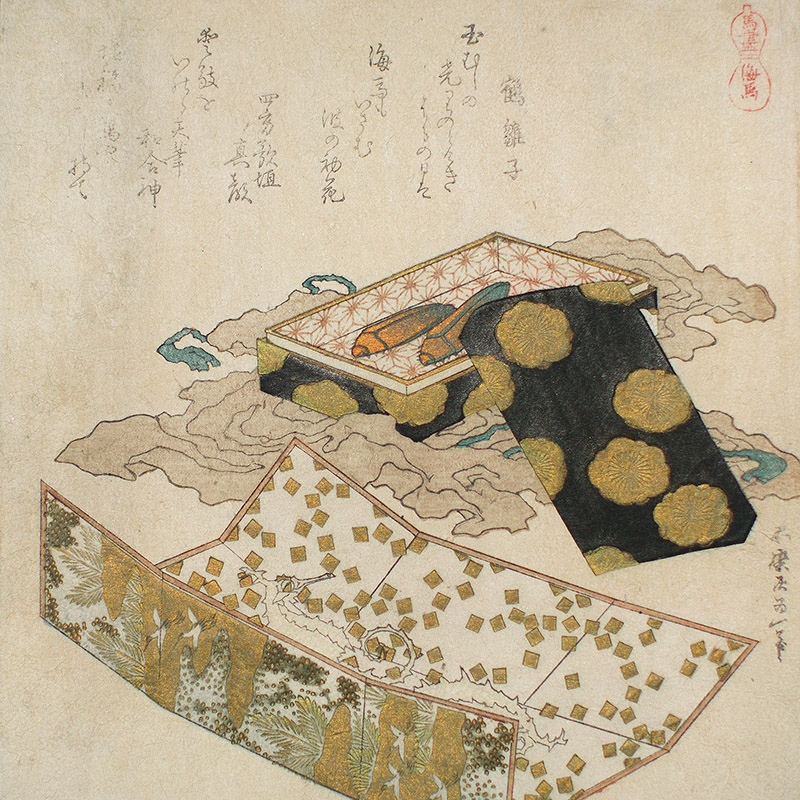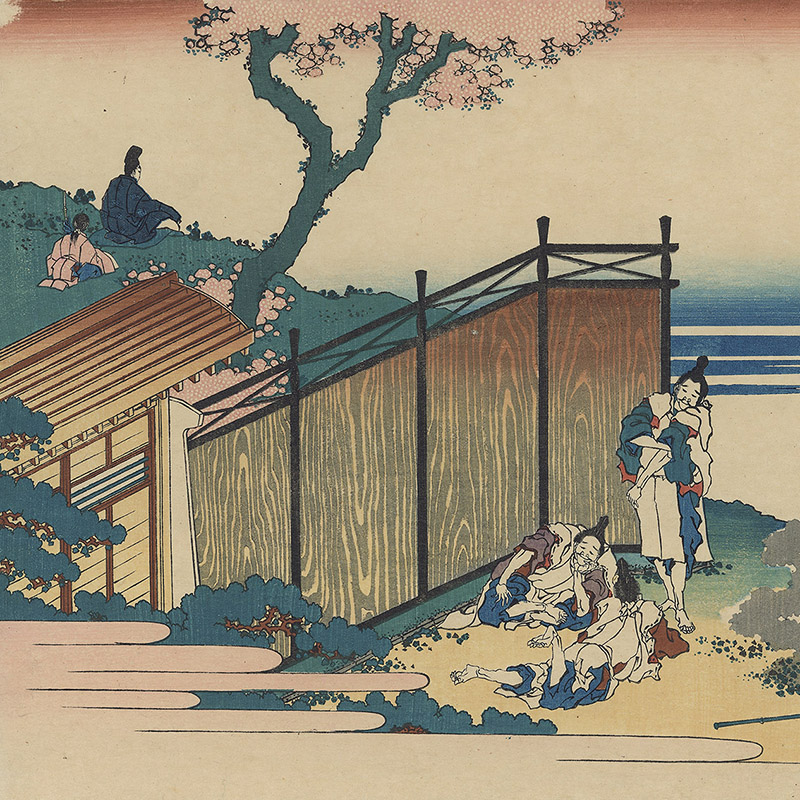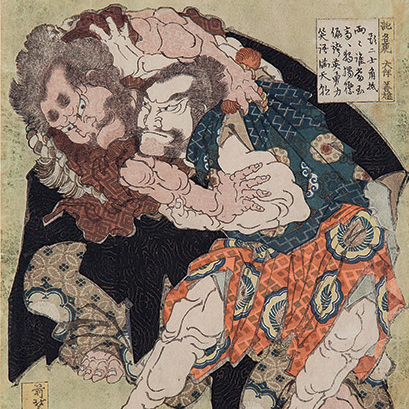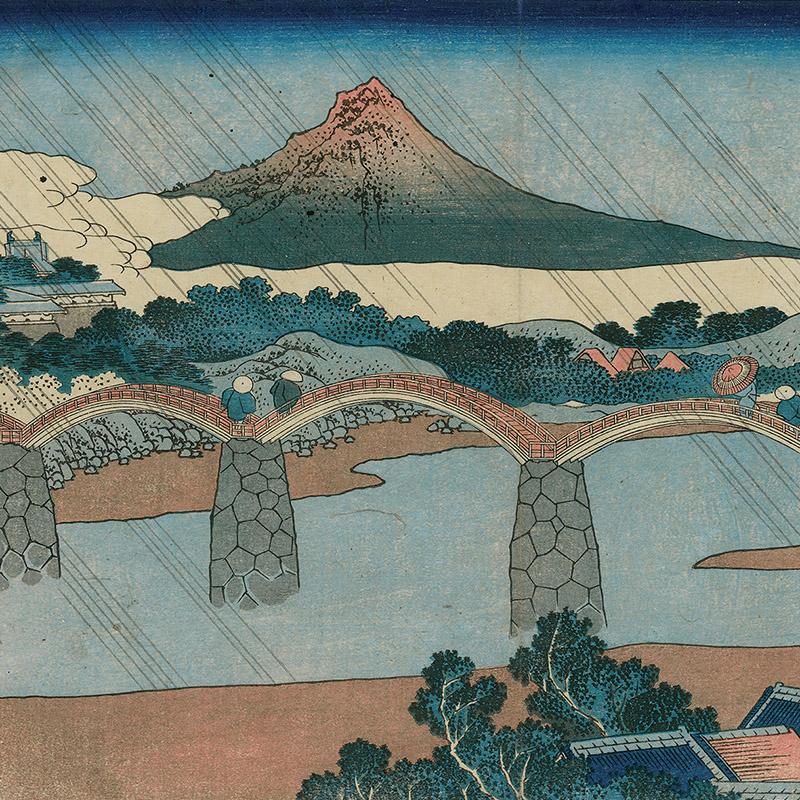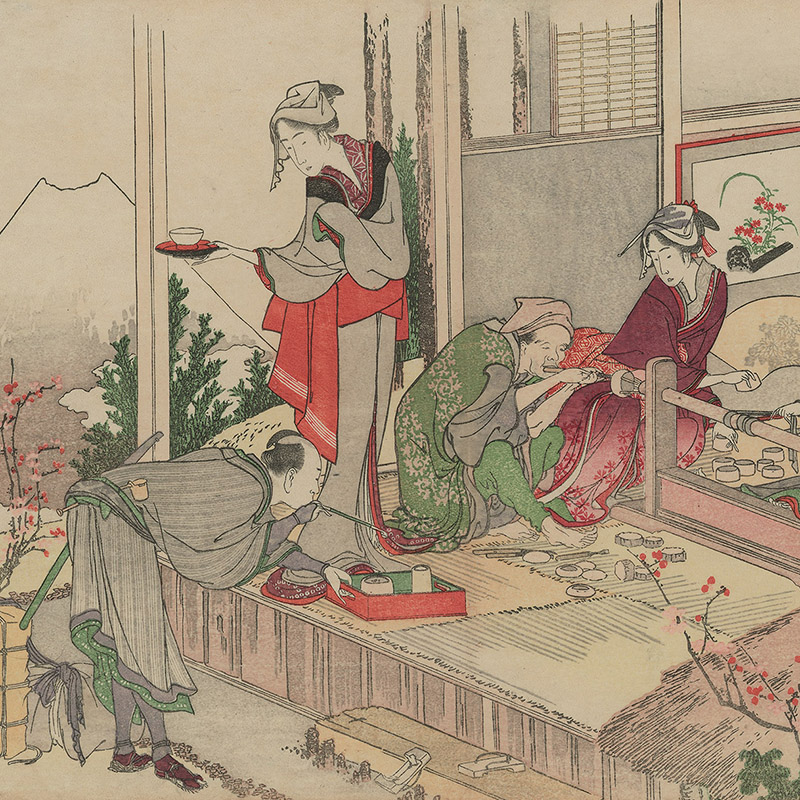Katsushika Hokusai
1760 - 1849
c.1820-22
Woodblock print, nishiki-e. Shikishiban surimono, 208 x 183 mm
Signed: Fusenkyo Iitsu hitsu.
The most common type of surimono print contained a blend of image and poetry. In this instance the poems were composed by Tetsunoya Ume and Yomo Magao.
Given the prominence of the horse in the composition, this surimono should be dated 1822, the Year of the Horse.
Hatakeyama Shigetada (1164–1205), was a samurai. He fought in the Genpei War, originally for the Taira clan, but changed his allegiance at the Battle of Dan-no-ura and ended the war on the winning side.
Another impression of this surimono is at the Rhode Island School of Design Museum (Asian Art 1574).
Information on the master
Katsushika Hokusai, dominated the scene of the art of the Japanese print (Ukiyo-e) in the field of book illustration, drawing and painting. He was born in the Honjo district of Edo. His passion for art began at an early age; he was adopted by an illustrious family of artisans who introduced him to wood engraving. This influenced his career and at the age of 18 he entered at the studio of Katsukawa Shunso (1726-1793), who specialised in prints depicting the popular Kabuki theatre. Under the pseudonym of Shunro, around the 1780s, he got to know artists like Shigemasa (1739-1820) and Kiyonaga (1752-1815) who influenced his drawing of figures. Around 1790 he produced his first important prints which he signed Kako. He also produced fine Surimono. In 1797 he married and took the name Hokusai, becoming one of the foremost illustrators and artists of Japan. Among his most famous work are the ehon, books of images, as the 15 albums of drawings entitled Manga. The most celebrated of his prints series is The thirty-six views of Mount Fuji, early thirties. Amongst his many pupils: Shinsai, Hokuju, Hokuba, Hokkei, Shigenobu.
Other works of the master
